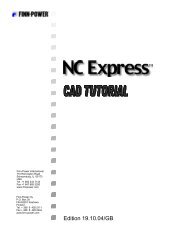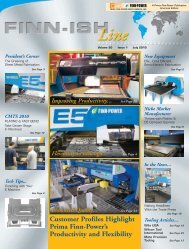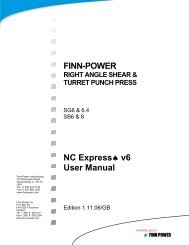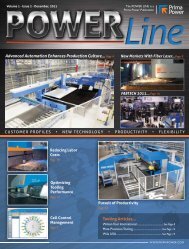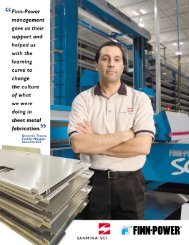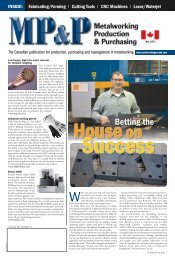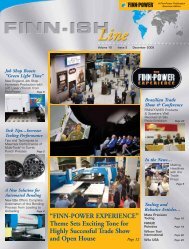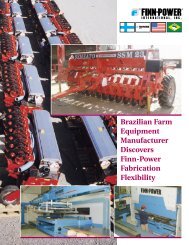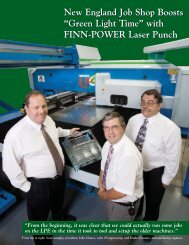Stand-Alone Punch machine user manual - Finn-Power International ...
Stand-Alone Punch machine user manual - Finn-Power International ...
Stand-Alone Punch machine user manual - Finn-Power International ...
You also want an ePaper? Increase the reach of your titles
YUMPU automatically turns print PDFs into web optimized ePapers that Google loves.
Database for stored plate information containing the nest’s material type and<br />
thickness. If a plate(s) is found that shares the same material type and thickness, the<br />
plate(s) is entered into the Nest dialog plate list automatically.<br />
Additional information is available for use within the plate setup- Utilization, Cost,<br />
CS storage address. Utilization percentage is entered to display the desired<br />
utilization value. Cost is the cost of a single sheet, once parts are nested material<br />
used for the part is calculated from the cost defined. If a CS storage tower is<br />
present within the <strong>Finn</strong>-<strong>Power</strong> system, CS storage address can be stored for each<br />
plate to be output within the code accordingly; this allows quicker and less hassle<br />
program loading at the <strong>machine</strong>. Finally, if a plate is stored within the Plates<br />
Database as a remnant may be defined here.<br />
Plates defined within the Plates Database do not actually need to be on hand (raw<br />
material). Plates Database can be used to load plate sizes for material types and<br />
thickness’ that are typically used. This feature is used to save time when creating<br />
nests.<br />
5.1.2 Parts Database<br />
When parts are created within NC Express, necessary information is stored within<br />
the CP file. Therefore, each separate part has it’s own properties which are used<br />
throughout the entire system. The most important information stored within a part<br />
for nesting is the material type and thickness, part rotations, and turret used. Why<br />
this information is important is to allow for quick part selection and processing,<br />
meaning that all three of these pieces of information can be sorted or modified<br />
when selecting parts in nesting.<br />
In addition to the three items mentioned, more items are available to help select<br />
parts. Within the nest dialog information from the Parts Database is viewable. The<br />
following items can be viewed: part name, file location, sorting type and address,<br />
turret used, slug hole (laser) and revision level. Part name, sorting device, turret<br />
used and slug hole can be sorted within the Parts Database list to allow grouping of<br />
similar parts. These items are used to save time when nesting parts.<br />
5-79




